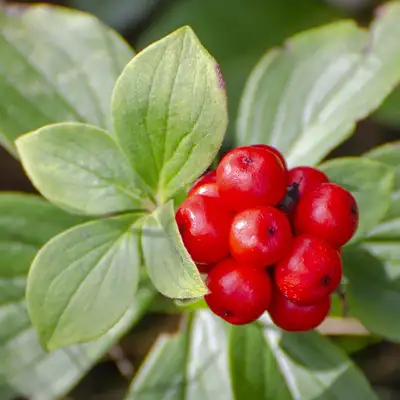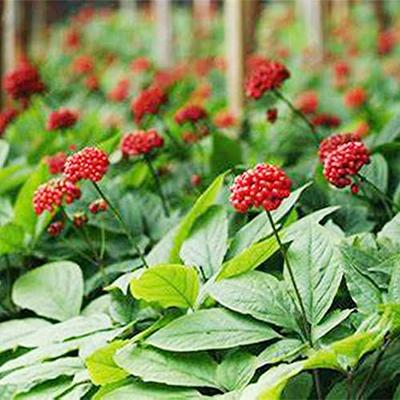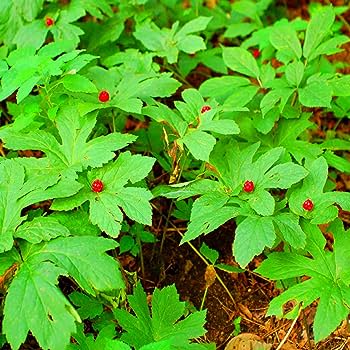Information about Ginseng Roots
The Chinese and the Native Americans have known about the cure-all restorative powers of the ginseng root for thousands of years. There was a time when the ginseng root would fetch a price equivalent to its weight in gold in China. Ginseng belongs to the Araliaceae family of plants and is of a perennials variety. Though ginseng takes some time to grow, the wait is well worth it. There are a variety of ginseng plants, such as:
American ginseng or Panax
Asian ginseng
Dwarf ginseng
Siberian ginseng
Notoginseng
Japanese ginseng
Buying ginseng roots and tea infusions is relatively easier than growing the plant. However, you can quickly obtain the necessary permits for growing ginseng and buy stratified ginseng seeds from a reputed nursery.
The List of Benefits Goes On and On
Different varieties of ginseng offer users different types of benefits. In general, these are the benefits of using ginseng roots:
Ginseng is a cure-all plant that has historically been used to cure many ailments like diabetes, gout, and even Alzheimer’s.
Regular ginseng intake is believed to revitalize the body and mind by increasing the energy produced by the body.
Ginseng roots are known to reduce stress, calm the nerves, and increase endurance powers.
Infusions can also be used to reduce cholesterol and ward off heart diseases.
Some research indicates that ginseng roots can help regularize menstrual cycles in women and may also help by calming hot flashes in women undergoing menopause.
Many Ways of Consumption
Outstanding quality ginseng roots can be ingested by chewing, brewing, stewing, and swallowing. It is commercially available in tablets, tea bags, pills, powders, and food. Ginseng roots can be sliced and added to soups and chicken broth as well. These roots are easy to use and highly beneficial to consumers.

Deep within the lush and shadowy enclaves of dense forests and secluded valleys exists a botanical phenomenon that has caught the vision of humans for centuries: wild ginseng. This remarkable perennial herbaceous plant has twisted and gnarled roots, unique leaves, and enchanted herbalists, collectors, and connoisseurs. Ginseng, especially the wild variety, is highly esteemed in traditional Eastern medicine and has earned widespread acclaim for its alleged therapeutic benefits and cultural significance. Its distinct aroma, flavor, and intricate and captivating appearance make it a prized possession for many who seek to experience its alluring charm.
Wild ginseng (Panax quinquefolius) is a remarkable plant that stands out from its cultivated counterpart in several ways. It grows in the wild, rooted in the rich soils of temperate forests across North America and East Asia. This untamed origin gives wild ginseng a unique character absent in its cultivated cousins, which are grown under controlled conditions.
Moreover, wild ginseng's growth is slow and deliberate, taking years to reach maturity. This results in roots that are highly prized for their potency and purity. Wild ginseng roots are complex, containing numerous active compounds with multiple health benefits. These roots are often harvested by experienced foragers who intimately understand the plant and its environment.
Wild ginseng is a fascinating plant that has captivated human attention for centuries. Its unique characteristics and potent medicinal properties make it one of the most sought-after herbs in the world.
Wild Ginseng from Nature's Embrace
For thousands of years, wild ginseng has been hailed as a miraculous cure for a wide range of ailments. It is renowned for its numerous medicinal properties and is believed to provide holistic bodily benefits. In Traditional Chinese Medicine (T.C.M.), wild ginseng is an adaptogen that assists the body in coping with stress and promotes overall well-being. According to T.C.M., this remarkable herb is thought to replenish vital energy, or "qi," and restore equilibrium to the body's systems. It is no surprise that wild ginseng continues to be highly valued in many cultures around the world.

Wild ginseng is a highly valued herb that has gained recognition for its numerous potential health benefits and adaptogenic properties in Western herbalism, apart from its traditional use in T.C.M. This herb is rich in bioactive compounds, such as ginsenosides, polysaccharides, and polyacetylenes, which are responsible for its numerous therapeutic properties, including antioxidant, anti-inflammatory, and immune-boosting effects. These properties can help improve cognitive function, increase energy levels, enhance immune function, and relieve stress. Wild ginseng is a versatile herb with many health benefits, making it a valuable complement to one's health routine.
Wild ginseng is a herbaceous perennial plant that grows in the wild and is highly valued for its numerous medicinal properties. However, it is not just the therapeutic aspects of wild ginseng that make it so revered in many Eastern cultures. It is also regarded as a symbol of prosperity, longevity, and vitality. The plant is considered a precious gift from nature and has been traded and treasured for centuries, often commanding premium prices in markets worldwide.
Wild ginseng's scarcity and elusive nature add to its allure, fueling a fervent passion among collectors and enthusiasts who venture deep into remote wilderness areas to seek out this botanical treasure. The plant's root, which is the most sought-after part, can take up to 10 years to mature and is known for its distinctive forked shape. Collectors carefully excavate the root and take care to preserve its delicate structure, as any damage can significantly reduce its value.
For many, the hunt for wild ginseng is not just about the financial rewards but also about connecting with nature and the cultural heritage of this revered plant. The plant's cultural significance and medicinal properties continue to make it a highly sought-after commodity in many parts of the world.
Preserving the Legacy of Wild Ginseng
As the demand for wild ginseng grows, many are becoming increasingly concerned about the plant's sustainability and conservation. This is due to the plant's sluggish development speed and delicate nature, making it especially vulnerable to overexploitation. Harvesting wild ginseng is further complicated by irresponsible harvesting practices, habitat destruction, and illicit trade. These factors pose significant threats to wild populations, and there is an urgent need for conservation efforts and sustainable management strategies to ensure that these valuable plants are protected for future generations.

Wild ginseng is a plant species used for centuries in traditional herbal medicine. Due to its high demand, wild ginseng populations have been endangered. Thus, recognizing the importance of preserving the plant for future generations, governments, conservation organizations, and local communities have taken steps to protect its habitat and regulate its harvest. Sustainable harvesting practices that consider the plant's growth and reproduction habits, such as age restrictions, seasonal harvest limits, and cultivation initiatives, aim to ensure the long-term viability of wild ginseng populations. These practices support the preservation of the plant and the local economies and traditional harvesting communities that depend on it. Implementing such measures has contributed to protecting wild ginseng populations and ensured the continuity of this valuable plant species for years to come.
Wild Ginseng Ecological Significance
Wild ginseng is a botanical treasure that has gained significant attention due to its remarkable ecological and cultural significance. This valuable plant has been the subject of different campaigns and endeavors to raise awareness about its importance and promote sustainable use. As a result, people have developed a deeper appreciation for the plant and its role in maintaining a healthy ecosystem. Educational programs, conservation efforts, and eco-tourism opportunities have allowed individuals to engage with wild ginseng responsibly, fostering a stronger connection to nature and a heightened sense of responsibility toward its preservation. These initiatives have helped protect the plant and contributed to the well-being of local communities and the environment.
In conclusion, wild ginseng represents the lasting bond between humanity and the natural world. With its storied history, therapeutic potential, and cultural significance, wild ginseng continues to captivate the imagination and inspire awe. As we navigate the complexities of modern life, we can find solace and wisdom in the ancient wisdom of this enigmatic elixir, rooted in the timeless rhythms of nature's embrace.



















































